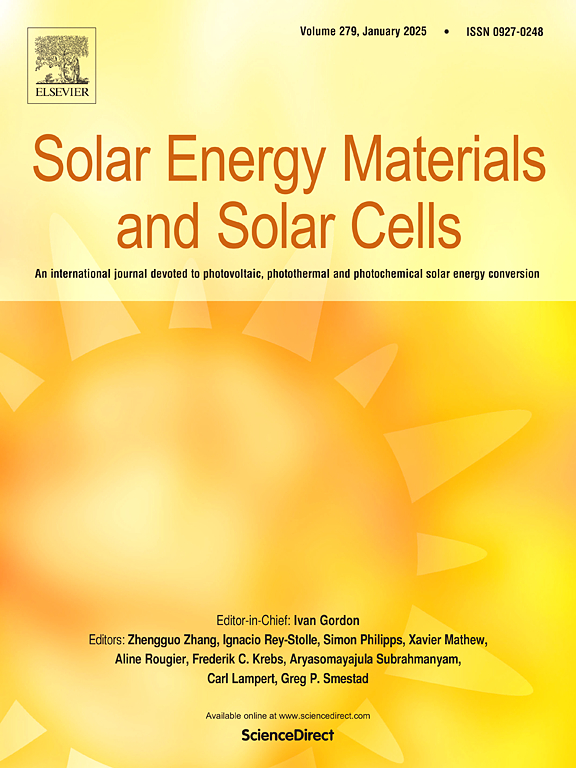Solar-driven MXene-based DES nanofluid coupled with high-reflectivity PVDF/PMMA film for efficient atmospheric water harvesting
IF 6.3
2区 材料科学
Q2 ENERGY & FUELS
引用次数: 0
Abstract
Solar-driven atmospheric water harvesting is an innovative technology that utilizes solar energy to convert light into heat, promoting the condensation of water vapor from the air and enabling efficient water collection. The overall light absorption capacity of the system and the energy conversion efficiency of photothermal nanofluids are critical factors limiting the efficiency of water harvesting. In this study, a deep eutectic solvent (DES) nanofluid was developed using choline chloride (ChCl) and urea, with MXene introduced to enhance the photothermal conversion capability. Under solar irradiation of 1000 W/m2, the MXene nanofluid with a concentration of 0.05 wt% achieved a photothermal conversion efficiency of 94.3 %. A high-reflectivity polyvinylidene fluoride (PVDF)/polymethyl methacrylate (PMMA) film was fabricated via electrospinning and combined with the DES-based nanofluid, increasing the overall light absorption through an extended optical path. This coupled system demonstrated a 49 % increase in water evaporation rate compared to the original nanofluid, reaching 0.91 kg/m2·h. The system exhibited stable evaporation performance in outdoor environments, with an average evaporation rate of 0.64 kg/m2·h. This research provides new insights and technological support for efficient solar energy collection and water resource utilization, offering significant potential for practical applications.
求助全文
约1分钟内获得全文
求助全文
来源期刊

Solar Energy Materials and Solar Cells
工程技术-材料科学:综合
CiteScore
12.60
自引率
11.60%
发文量
513
审稿时长
47 days
期刊介绍:
Solar Energy Materials & Solar Cells is intended as a vehicle for the dissemination of research results on materials science and technology related to photovoltaic, photothermal and photoelectrochemical solar energy conversion. Materials science is taken in the broadest possible sense and encompasses physics, chemistry, optics, materials fabrication and analysis for all types of materials.
 求助内容:
求助内容: 应助结果提醒方式:
应助结果提醒方式:


